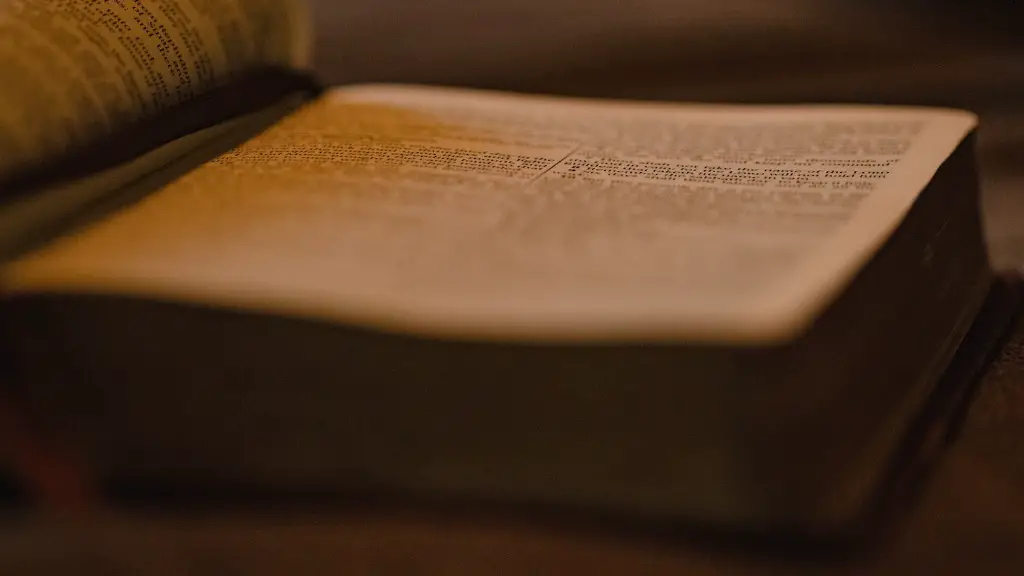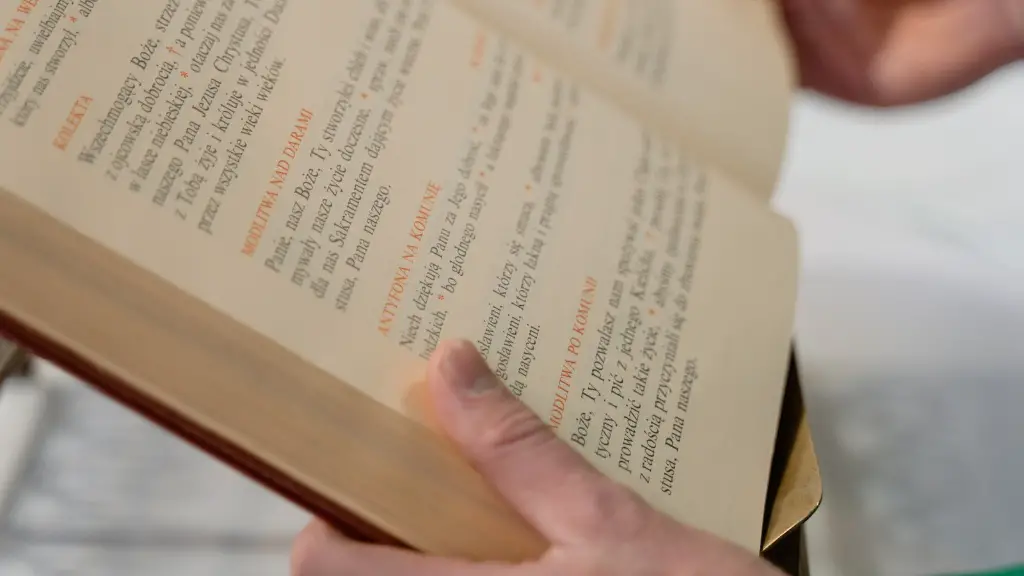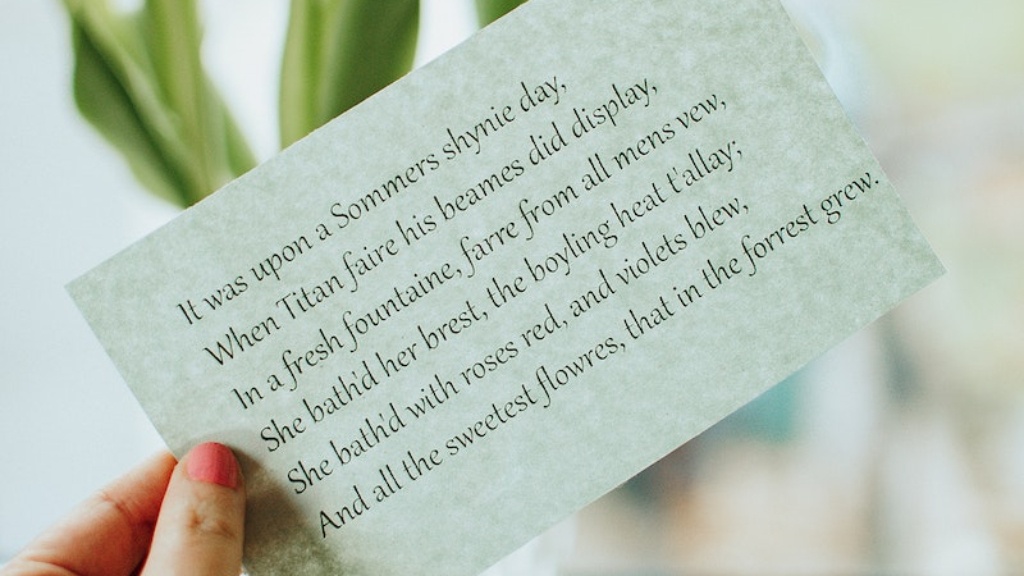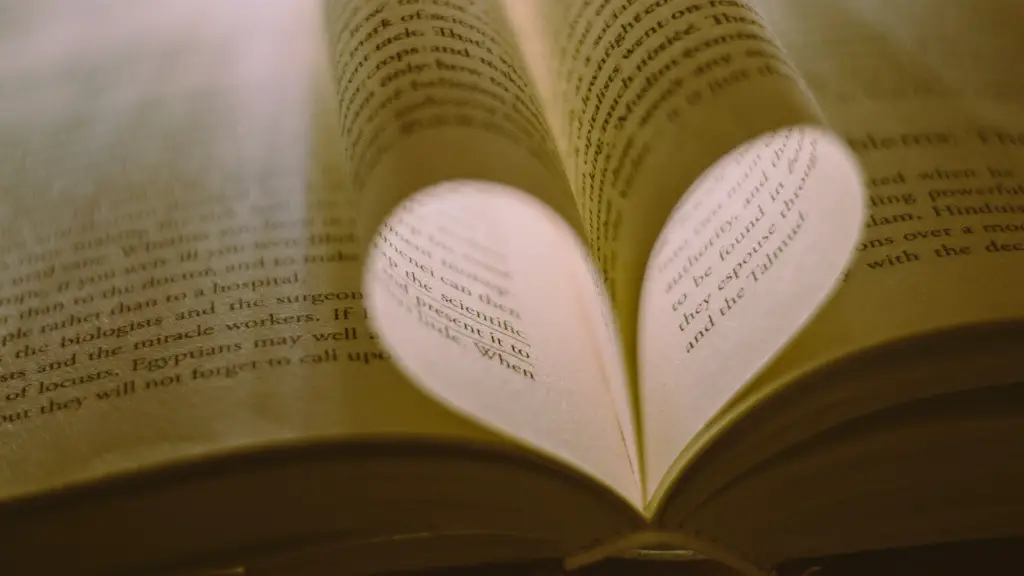Humans have communicated emotion through poetry since ancient times. It has long been used to convey the thoughts and feelings of an author or an audience in a concise and powerful way. In this article, we’ll explore what is a mood in poetry and how it affects the interpretation of a poem or a piece of literature.
A mood in poetry is the atmosphere or feeling that an author has chosen to create in a given piece of literature. It is the tone or emotion that a poem conveys to its reader. It could be somber or joyful, tranquil or tumultuous. It could evoke feelings of joy, sorrow, pain, or hope. A poem’s mood is the feeling it generates in the reader, and it can be varied from poem to poem.
Understanding the mood of a poem is crucial for interpreting its meaning. An author’s feelings and intentions can be determined from the mood of a poem. For example, a poem about death might be sad and somber, whereas a poem about love might be joyous and uplifting. The poem’s underlying meaning and how it was intended to be experienced can be discerned from its mood.
The mood of a poem is created through a variety of techniques, including word choice, imagery, and rhythm. Word choice is the most important factor in creating a mood in poetry. Words with strong connotations can evoke a certain emotion and help create a particular atmosphere. Imagery can be used to convey a vivid experience, while rhythm can create a sense of urgency or suspended animation.
Mood can also be affected by a poem’s form and structure. The structure of a poem can help in conveying a certain atmosphere to the reader. Poems can be written in traditional forms such as sonnets, villanelles, and sestinas, all of which bring a certain mood to the poem.
The mood of a poem is one of its defining elements and can greatly influence its interpretation and meaning. As readers, it is important to be aware of the mood of a poem and to be sensitive to the feelings it conveys.
Imagery
One way in which mood is created in poetry is through imagery. Imagery is the use of vivid descriptions and the evocation of sensory experience to create pictures in the mind of the reader. By using strong imagery, a poet can help the reader to experience the same emotions and mood that the poet felt when writing the poem. Images can evoke powerful feelings of joy, sorrow, pain, or hope, and this can create a certain atmosphere in the poem.
Imagery can be created through vivid descriptions of a scene and its characters, which can help the reader to feel as if they are in the moment. By using words with strong connotations and sensory descriptions, the poet can create a powerful atmosphere. For example, a poet might describe a hand as “gnarled and worn,” which carries a certain connotation of age and experience and helps to create a somber mood.
Imagery can also be used to evoke emotion in the reader, such as fear or sadness. By creating a vivid image, a poet can make the reader feel as though they are in the moment and experiencing the emotions the poet is trying to convey. For example, a poem about a war might describe scenes of death and destruction, which can help the reader to feel sorrow and dread at the physical and emotional consequences of war.
Rhythm
Rhythm is also an important factor in creating mood in poetry. Different rhythms can affect the mood of a poem and can create a certain atmosphere for the reader. By using specific patterns and cadences, the poem’s poet can convey a certain emotion or atmosphere.
For example, a slow, deliberate rhythm can create a calm and tranquil mood, whereas a rapid, urgent rhythm can create a feeling of restlessness and urgency. By using a combination of these two rhythms, the poet can create a sense of suspense and anticipation, as the reader is unsure of what will happen next.
Rhythm can also be used to create a sense of time. In a slow, rhythmic poem, a sense of timelessness can be evoked, while a more rapid, choppy rhythm can create a sense of urgency and haste. By manipulating the rhythm of the poem, the poet can create a certain atmosphere or mood and evoke certain emotions in the reader.
Word Choice
Word choice is also an important factor in creating mood in poetry. The poet can use words with certain connotations to evoke a certain atmosphere. By using words with strong connotations, the poet can communicate their intended emotion to the reader.
For example, in a somber poem, words such as “dark,” “bleak,” or “desolate” can be used to create a gloomy mood. Conversely, words such as “bright” or “warm” can evoke a feeling of joy in the reader. By using words with strong connotations, the poet can create a certain atmosphere in the poem.
The rhythm and cadence of the poem can also be used to create atmosphere. Certain rhythms can create a feeling of relaxation or urgency, depending on the poet’s intention. For example, a slow, deliberate rhythm can create a peaceful atmosphere, while rapid, aggressive rhythms might create a feeling of tension and foreboding.
Form and Structure
The form and structure of a poem can also affect its mood. Traditional forms such as sonnets, villanelles, and sestinas, often evoke specific moods. The sonnet form, for example, traditionally evokes feelings of romance and love, while villanelles create a feeling of loss, regret, or mourning.
By writing in a specific form, the poet can evoke a certain mood in the reader. For example, a sonnet could be used to tell the story of a romantic relationship, while a villanelle could be used to explore feelings of loss or sorrow. By writing a poem in a particular form, the poet can create a certain atmosphere in the poem.
Interpreting the Mood of a Poem
Understanding the mood of a poem is important in interpreting its meaning. By understanding the emotions and atmosphere the poet is trying to evoke, the reader can get a better understanding of the poem’s underlying message.
The mood of a poem can also influence the reader’s engagement with the poem. If the poet has created a certain atmosphere, the reader will be able to relate to it and the poem’s message will be more powerful. For example, if the poem is about love and the poet has created a joyful atmosphere, the reader will be more likely to feel the emotions and message of the poem.
In conclusion, a mood in poetry is an important factor in conveying an author’s emotions and intentions. Understanding the mood of a poem is essential in interpreting its meaning and can greatly affect the reader’s engagement with the poem. By paying attention to the poet’s use of imagery, rhythm, and word choice, the reader can gain insight into the mood and feeling of a poem.
Questions and Answers
Q: What is a mood in poetry?
A: A mood in poetry is the atmosphere or feeling that an author has chosen to create in a given piece of literature. It is the tone or emotion that a poem conveys to its reader.
Q: How is mood created in poetry?
A: Mood can be created through a variety of techniques, including word choice, imagery, and rhythm. Word choice is the most important factor in creating a mood, as words with strong connotations can evoke a certain emotion and create a particular atmosphere.
Q: How does understanding the mood of a poem help with its interpretation?
A: Understanding the mood of a poem is crucial for interpreting its meaning. A poem’s underlying message and how it was intended to be experienced can be discerned from its mood. By understanding the emotions and atmosphere the poet is trying to evoke, the reader can get a better understanding of the poem’s underlying message.
The Role of Tone
Tone is another important element of poetry that can contribute to the mood of a poem. Tone is the attitude toward a subject or audience that a poem conveys. Tone can be lighthearted and humorous, or serious and solemn. It can also be gloomy, urgent, or questioning.
Tone can be expressed through both language and imagery. The choice of words, imagery, and the poem’s overall structure can affect the tone of a poem. By using words with strong connotations and effective imagery, the poet can communicate their intended emotion to the reader.
Tone is often used to convey the poet’s attitude toward a certain event or subject. If the poem is about an uncomfortable or difficult topic, the poet could use an angry or bitter tone to convey their emotional response to the subject.
Understanding the poem’s tone can help the reader to interpret its meaning. It can provide insight into the feelings and thoughts of the poet and can also affect how the reader engages with the poem.
The Role of Theme
The theme of a poem is also an important element in creating mood. The theme of a poem is its underlying message or idea, and it can influence its mood and atmosphere.
For example, a poem about war might evoke feelings of sadness and despair. Conversely, a poem about love might create feelings of joy and hope. By exploring the theme of a poem, the reader can gain insight into the mood it is trying to create.
The theme of a poem can also be used to evoke certain emotions in the reader. By exploring the theme, the poet can communicate a certain feeling or emotion to the reader. For example, a poem about a difficult topic such as war or death might use a sad or somber tone to evoke a feeling of sorrow in the reader.
The poem’s theme can give the reader insight into its mood, and can also affect how the reader engages with the poem. By exploring the theme and understanding the feeling it is conveying, the reader can gain a better understanding of the poem’s message.





